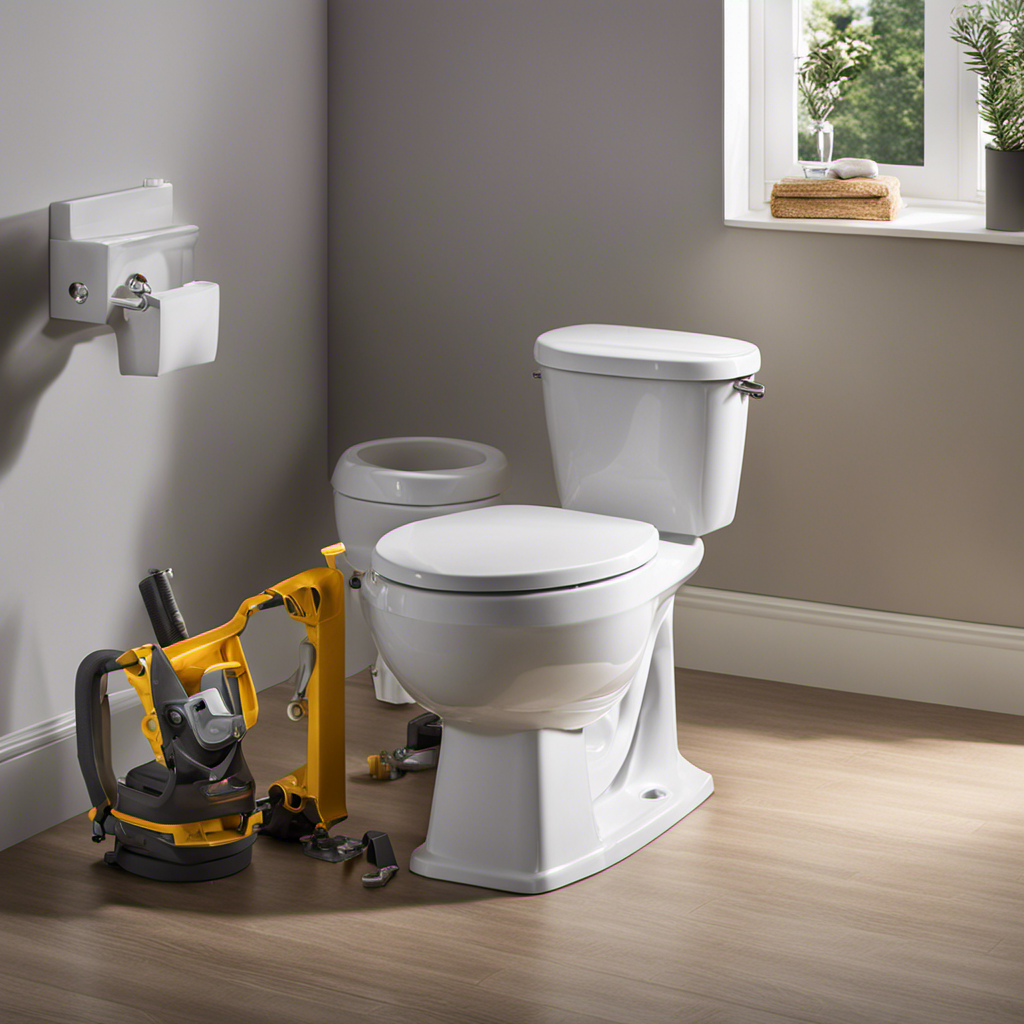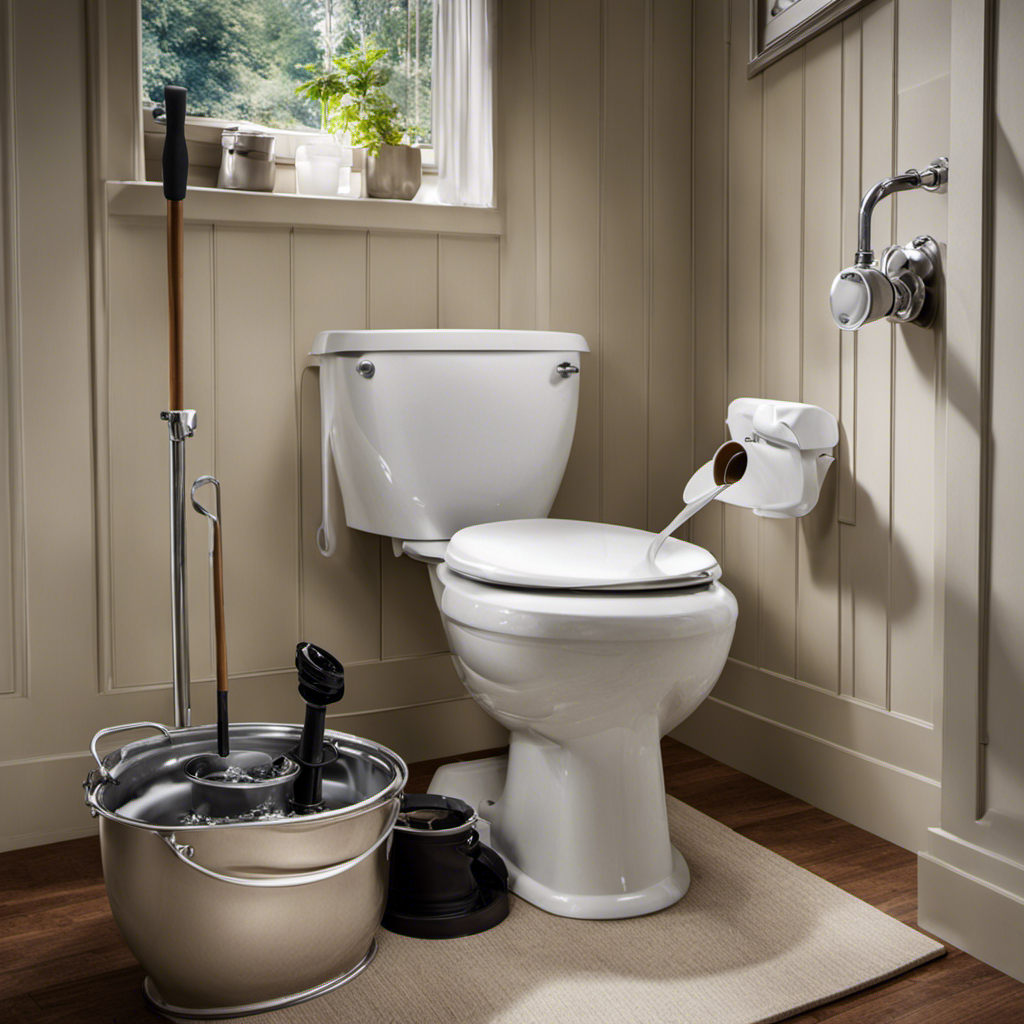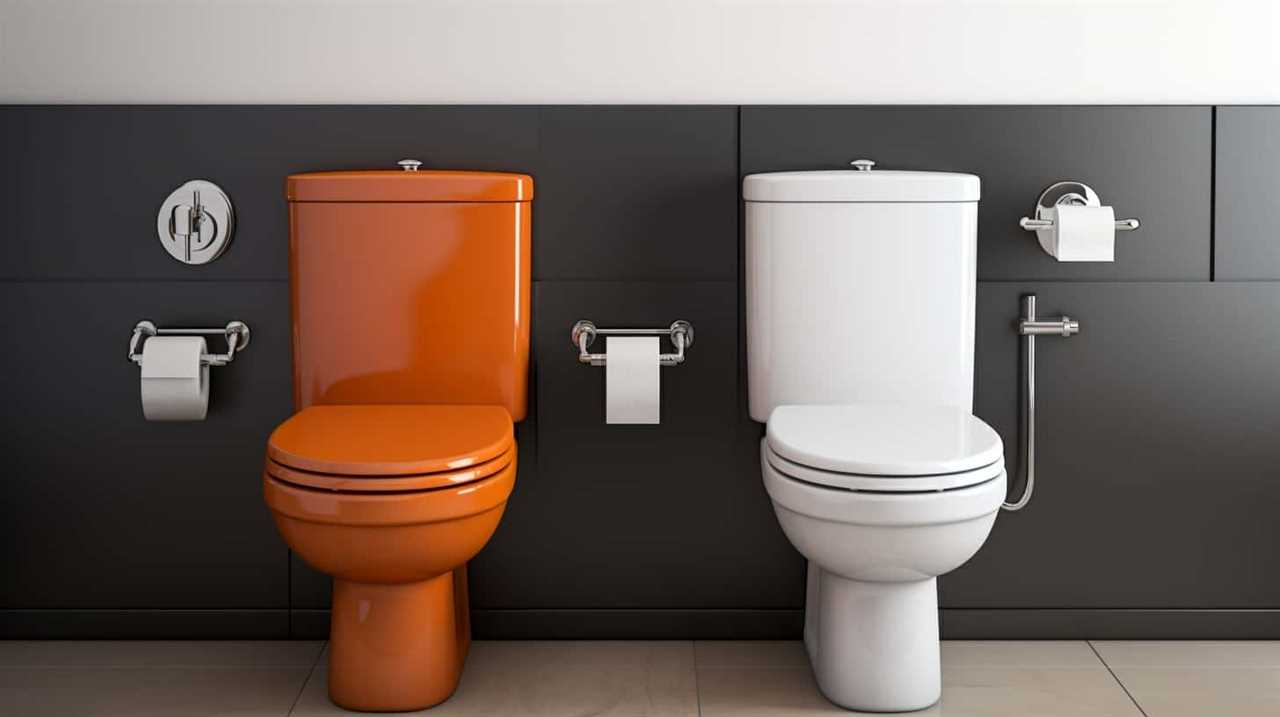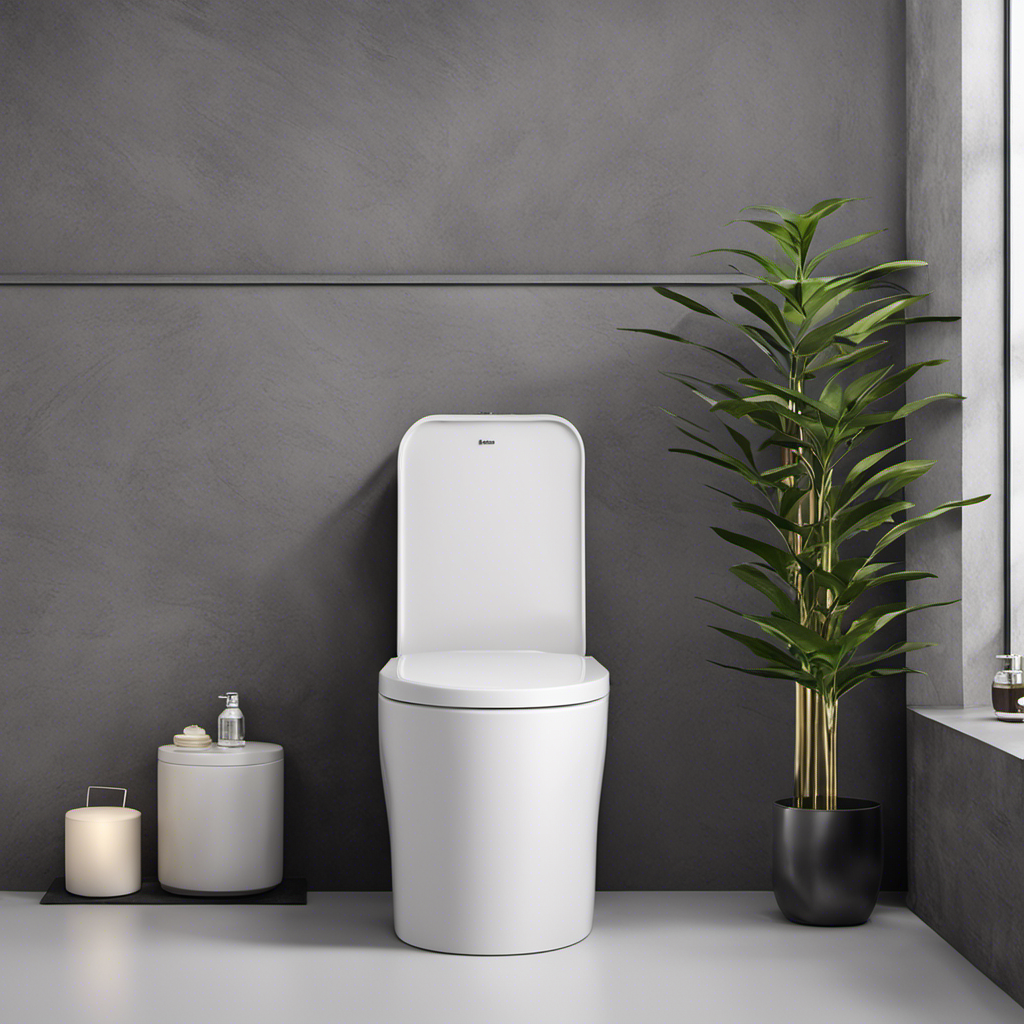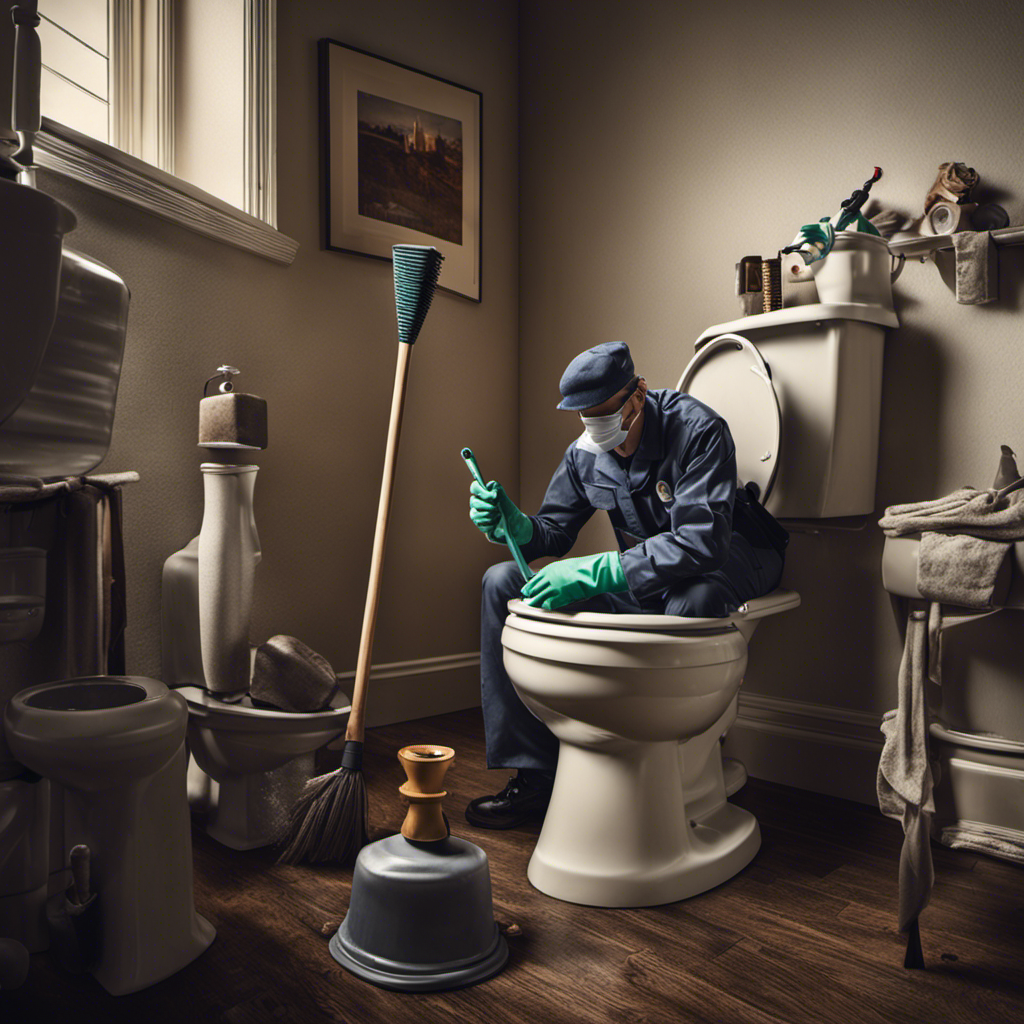I’ve been through it before – the frustration of a malfunctioning toilet. But fear not, because I’m here to guide you through the process of removing and installing a toilet.
In just a few simple steps, you’ll be able to tackle this task with confidence. We’ll start by preparing the area and shutting off the water supply.
Then, we’ll dive into the nitty-gritty of removing the old toilet and seamlessly installing the new one. Trust me, with my precise and detailed instructions, you’ll have a fully functioning toilet in no time.
Key Takeaways
- Turn off the water supply and disconnect the supply line.
- Measure the distance from the wall to the center of the flange.
- Ensure the toilet is sitting evenly on the floor.
- Lower the toilet bowl onto the wax ring and secure it in place.
Preparing the Area
Before you start removing the toilet, make sure to turn off the water supply and disconnect the supply line. Once that is done, you can begin preparing the area for the installation of a new toilet.
The first step is to measure for the new toilet. You will need to measure the distance from the wall to the center of the flange, as well as the distance between the bolts on the flange. This will ensure that the new toilet will fit properly.
After measuring, it is important to level the toilet. Use a level to ensure that the toilet is sitting evenly on the floor. This will prevent any rocking or instability once the toilet is installed.
Taking the time to measure and level the toilet will ensure a successful installation.
Shutting Off the Water Supply
To shut off the water supply, you’ll need to locate the shut-off valve and turn it clockwise. This valve is usually located behind or beneath the toilet. Here’s a step-by-step guide on how to turn off the water:
-
Locate the shut-off valve: Look for a small knob or lever near the base of the toilet. It may be behind a panel or in a nearby wall.
-
Turn the valve clockwise: Use a wrench or your hand to turn the valve in a clockwise direction. This will shut off the water flow to the toilet.
-
Test the water supply: Flush the toilet to ensure that the water supply has been successfully shut off. If the tank doesn’t refill, you’ve successfully turned off the water.
Removing the Old Toilet
Once you’ve shut off the water supply, it’s important to disconnect the water line from the back of the toilet.
To remove the old toilet, start by turning off the supply valve located near the wall. Then, flush the toilet to drain most of the water from the tank and bowl.
Next, use a wrench to loosen the nuts connecting the water line to the toilet. Once the nuts are loose, carefully lift the toilet off the floor and set it aside. Be cautious as it can be heavy.
Before disposing of the old toilet, make sure to clean the area thoroughly. Use a disinfectant to wipe down the floor and remove any debris.
Properly dispose of the waste to ensure hygiene and cleanliness.
Installing the New Toilet
Now that the old toilet has been removed, it’s time to prepare for the installation of the new one. First, make sure the toilet bowl is clean and free from any debris. Then, gather all the necessary tools and materials, including a new wax ring, bolts, and a wrench.
Here’s a step-by-step guide for installing the new toilet:
-
Place the wax ring on the flange, ensuring it is centered and secure.
-
Carefully lower the toilet bowl onto the wax ring, making sure it aligns with the bolts on the flange.
-
Press down firmly on the toilet bowl to create a tight seal with the wax ring.
-
Secure the toilet bowl in place by tightening the nuts onto the bolts with a wrench.
-
Attach the water supply line to the fill valve and tighten it with a wrench.
-
Finally, turn on the water supply and check for any leaks.
Following these steps will ensure a successful toilet installation with a properly placed wax ring.
Testing and Finishing Touches
After securing the toilet bowl in place, it’s important to attach the water supply line and tighten it with a wrench to prevent any leaks. Once that’s done, I like to give the toilet a final inspection before moving on to the finishing touches. One important step is painting and sealing around the base of the toilet to ensure a clean and professional look. This not only adds a touch of aesthetic appeal but also helps to protect against any water damage. Another crucial task is adjusting the flush mechanism to ensure proper functioning. This involves fine-tuning the water level and adjusting the chain or rod that connects the handle to the flapper. Taking the time to make these adjustments will ensure that your newly installed toilet works efficiently and effectively.
| Task | Description |
|---|---|
| Painting and Sealing | Apply a waterproof sealant around the base of the toilet for a clean look. |
| Adjusting Flush | Fine-tune the water level and adjust the chain or rod for proper flushing. |
Frequently Asked Questions
How Do I Choose the Right Size and Model of Toilet for My Bathroom?
When choosing a toilet, I consider the size and model that best suits my bathroom. It’s important to measure the available space and select a model that fits comfortably. There are various options to choose from, so I research and compare to find the perfect fit.
Are There Any Special Tools or Equipment Needed to Remove and Install a Toilet?
No, there aren’t any special tools or equipment needed to remove and install a toilet. Just the basics like a wrench and a plunger should do the trick. It’s a straightforward process.
What Should I Do if the Toilet Flange Is Damaged or Broken During the Removal Process?
If the toilet flange is damaged or broken during removal, you can try repairing it instead of replacing it. Options include using a repair kit, using a flange extender, or using a repair ring.
Can I Reuse the Wax Ring When Installing a New Toilet, or Should I Always Replace It?
When installing a new toilet, it’s generally recommended to replace the wax ring. Although reusing it is possible, there are pros and cons. Proper installation techniques, such as ensuring a tight seal, are crucial for avoiding leaks.
Is It Necessary to Hire a Professional Plumber to Remove and Install a Toilet, or Can I Do It Myself With Basic DIY Skills?
Hiring a professional plumber for toilet removal and installation is not necessary. With basic DIY skills, I can easily handle the task myself. However, it’s important to weigh the pros and cons before deciding.
Conclusion
As I tightened the final bolt on the new toilet, I couldn’t help but feel a sense of accomplishment.
The process of removing and installing a toilet may seem daunting, but with the right tools and knowledge, it can be a straightforward task.
From shutting off the water supply to carefully aligning the new toilet, every step required precision and attention to detail.
Now, as I prepared to test the flush, anticipation filled the air.
Would my hard work pay off?
